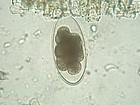Difference between revisions of "Category:Sheep Nematodes"
Jump to navigation
Jump to search
| Line 19: | Line 19: | ||
*''Trichostrongylus'' species | *''Trichostrongylus'' species | ||
| − | *''Nematodirus battus'' | + | *''[[Nematodirus battus]]'' |
| | | | ||
|- | |- | ||
|'''Worms that contribute to ovine PGE, but are rarely primary pathogens in the UK''' | |'''Worms that contribute to ovine PGE, but are rarely primary pathogens in the UK''' | ||
| | | | ||
| − | *''Trichostrongylus axei'' | + | *''[[Trichostrongylus axei]]'' |
| | | | ||
*other ''Nematodirus'' species | *other ''Nematodirus'' species | ||
| − | *''Cooperia'' species | + | *''[[Cooperia]]'' species |
*''Bunostomum'' species | *''Bunostomum'' species | ||
| Line 34: | Line 34: | ||
*''Strongyloides'' species | *''Strongyloides'' species | ||
| | | | ||
| − | *''Oesophagostomum'' species | + | *''[[Oesophagostomum]]'' species |
*''Chabertia'' species | *''Chabertia'' species | ||
| − | *''Trichuris'' species | + | *''[[Trichuris]]'' species |
|} | |} | ||
Revision as of 17:58, 8 August 2010
Gastrointestinal Nematodes
Many worm species occur in the gastrointestinal tract of sheep, though relatively few are of importance in the UK. Primary pathogens include:
| Abomasum | Small Intestine | Large Intestine | |
|---|---|---|---|
| Primary Pathogens in the UK |
|
||
| Worms that contribute to ovine PGE, but are rarely primary pathogens in the UK |
|
|
- All the above worms belong to the Trichotrongyloidea except:
- Bunostomum (a hookworm)
- Oesophagostomum
- Chabertia (Strongyloidea)
- Strongyloides (Rhabditoidea)
- Trichuris (a whipworm)
- Although many different genera and species of worms may be found in the gastro-intestinal tract of sheep there are only three distinct disease manifestations within the PGE complex:
- Ostertagiosis and Trichostrongylosis
- Nematodirosis
- Haemonchosis
Succession of Gastrointestinal Worm Species
The relative number of worms of each species changes during the grazing season. The succession of species is due to differences in:
- Ability of L3 to overwinter
- Fecundity between worm species
- Rate of development from egg to L3 stage
- Special requirements of Nematodirus
Pages in category "Sheep Nematodes"
The following 13 pages are in this category, out of 13 total.
